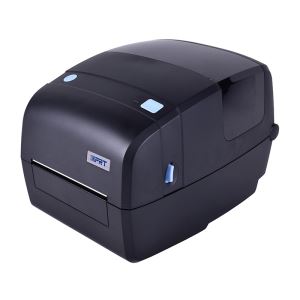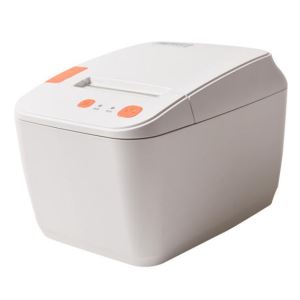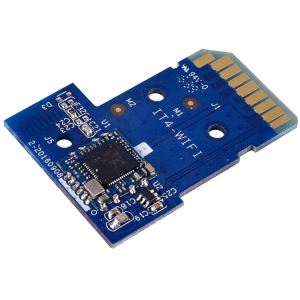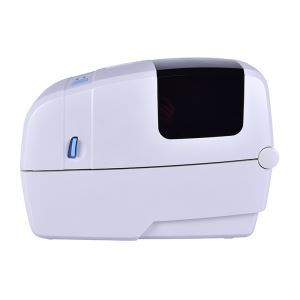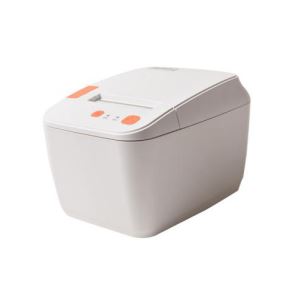Thermal printing can be defined as a digital printing process in which printed images are produced by selective heating of thermochromic papers or heat-sensitive ribbons.
Based on the difference of media, the thermal printing could be divided into direct thermal printing and thermal transfer printing. The direct thermal printing is to print image on the thermochromic paper, which is called the thermal paper, which passed over the thermal print head, the coating on it turns black in the areas where it is heated and producing the image. While, the thermal transfer printing is to print image on the heat-sensitive ribbon and pass the image through this heat-sensitive ribbon to different media, such as different of papers or synthetic films (e.g. PP, PE, or PET), etc.
Thermal printing technology has many advantages over the other printing technology; it is fast, clean, quiet, reliable and easy to maintain. There are a limited number of mechanical parts, no messy ribbons or toners, and no inking devices are needed to create the image.
Since the printers with thermal printing technology which is also called thermal printers only have one or two moving components, they are very reliable and economical to operate and maintenance costs are extremely low. The entire system is compact, simple to operate and suitable for use in virtually all applications.
Thermal print heads are usually much smaller and lighter than the printing elements used by other printing technology, so thermal printers are suitable when compact size, portability and on-demand printing are needed. At the same time, a sharp and precise image of excellent quality is produced consistently and quickly by properly matching the thermal paper to the print head by varying the chemical coating formulation.
Nowadays due to these advantage of thermal printing technology, more and more kinds of printers employed the thermal printing technology, such as Barcode printers, POS printers, Kiosk printers & Ticket printers, and RFID printers & Card printer, etc.
These advantages also contribute towards consumption of the thermal printers in a wide range of applications, such as Manufacturing & Industrial, Retail, Transportation & Logistics, Healthcare & Hospitality, and Government, etc.
Meanwhile, the thermal printing technology also has its disadvantages which is that the image printed on the thermal papers are easily to distortion or fading when exposed to water, heat, light or friction, however recent technological advancements have made them readable for periods of up to 50 years or more.
- Previous: How to Choose The Barcode Printer Model
- Next: Desktop Barcode Printer
Related News
- How To Maintain Barcode Printer?
- Advantages Of Barcode Printers
- Bar Code Printer Development Status
- Bar Code Printer Cleaning
- iDPRT Will Show At LogiMAT 2019 Stuttgart, 19-2...
- Barcode History And Usage
- Bar Code Printer Pressure Adjustment And Fast P...
- How To Choose A Barcode Printer
- Thermal Label Printer
- How to Choose The Barcode Printer Model
- Thermal Paper Required For Thermal Printers
- Desktop Barcode Printer
- 2018, iDPRT is Waiting For You In Dubai GITEX
- Application Of Thermal Printing Technology
- iDPRT Invites You to Join Gitex Exhibition 2017
- What Is A Barcode Printer
- Meet iDPRT In Labelexpo Europe 2017
- The Key To Thermal Printing Technology
- ProMAT, Chicago 03-06 April, 2017
- Common Types Of Printers


